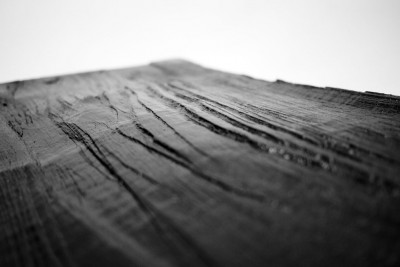
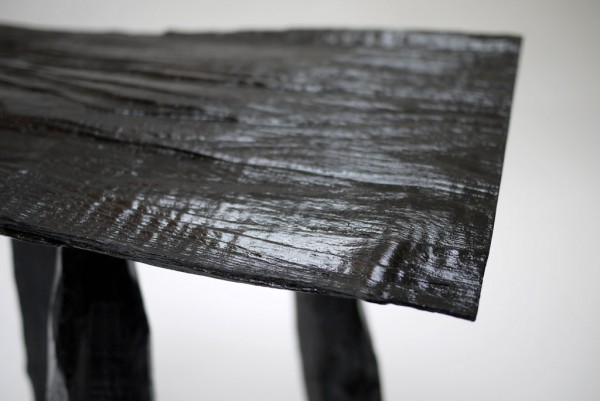
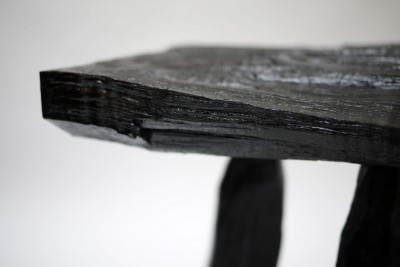
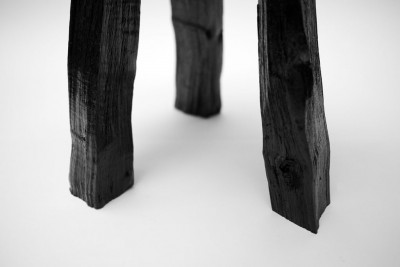
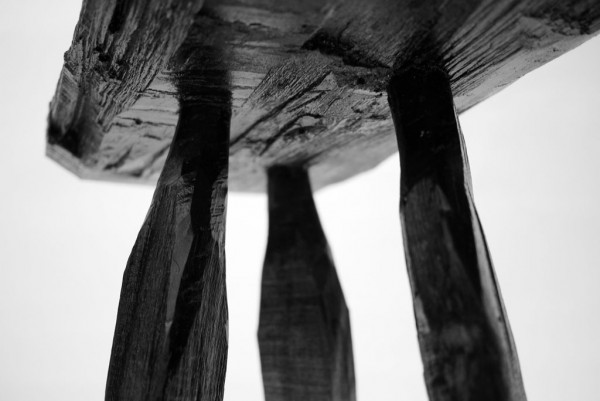
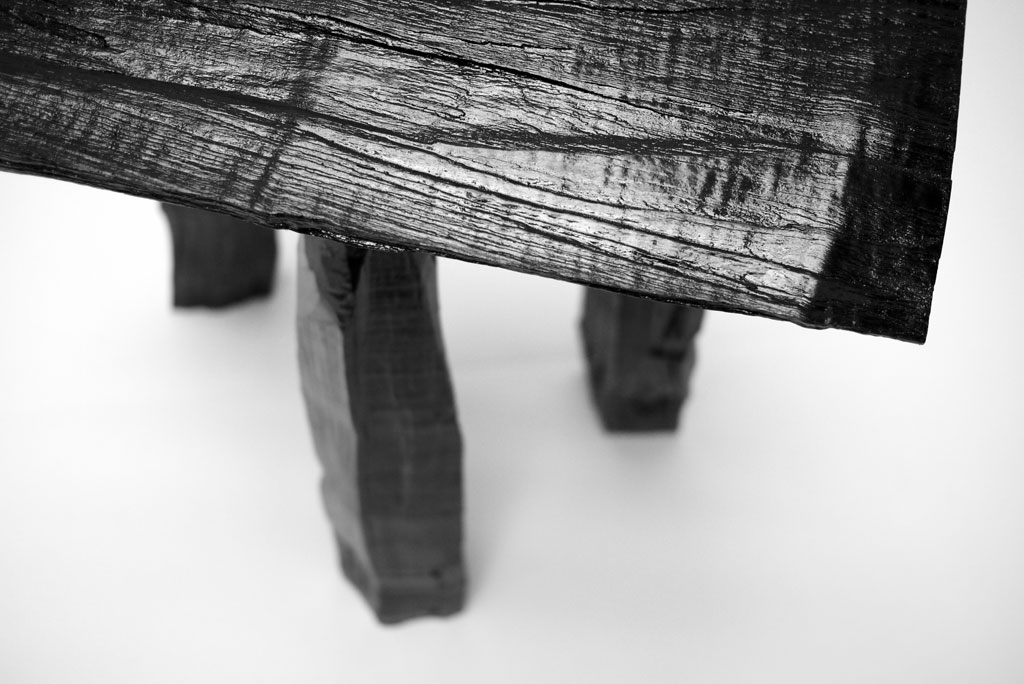
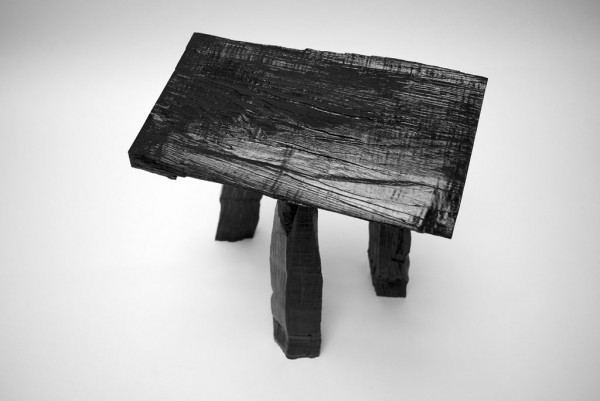
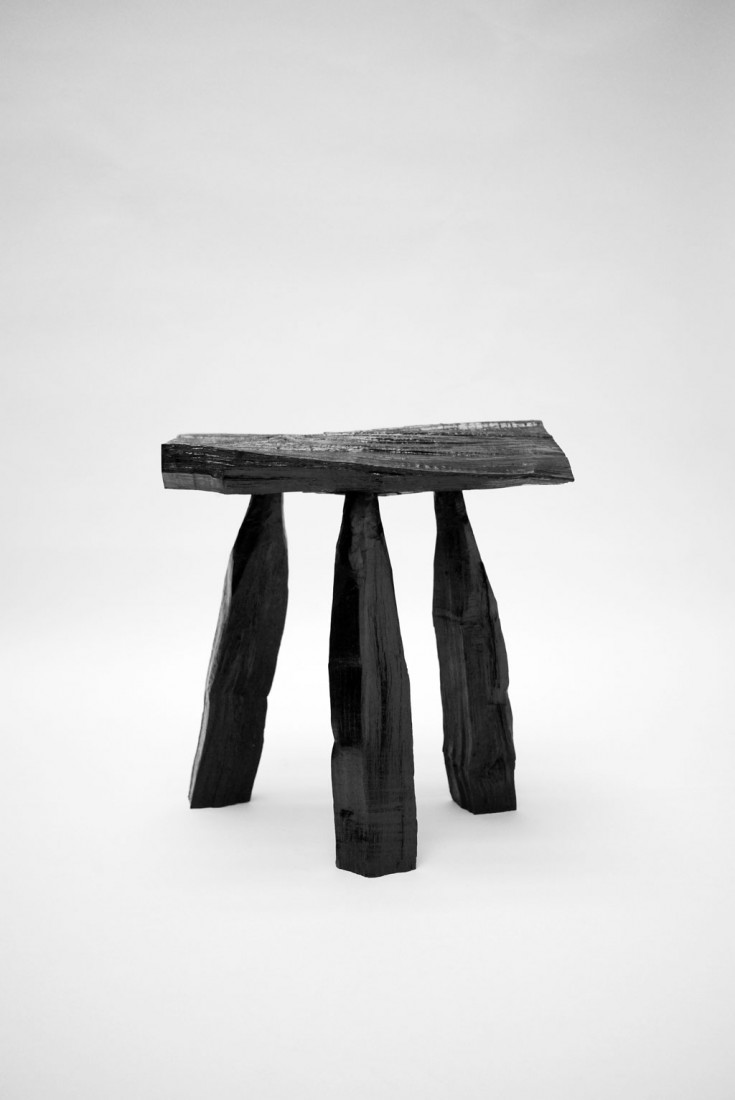
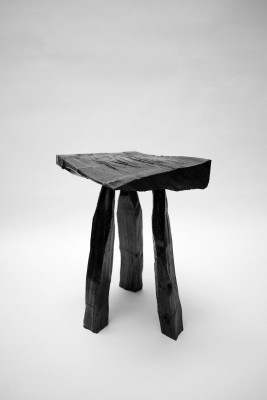
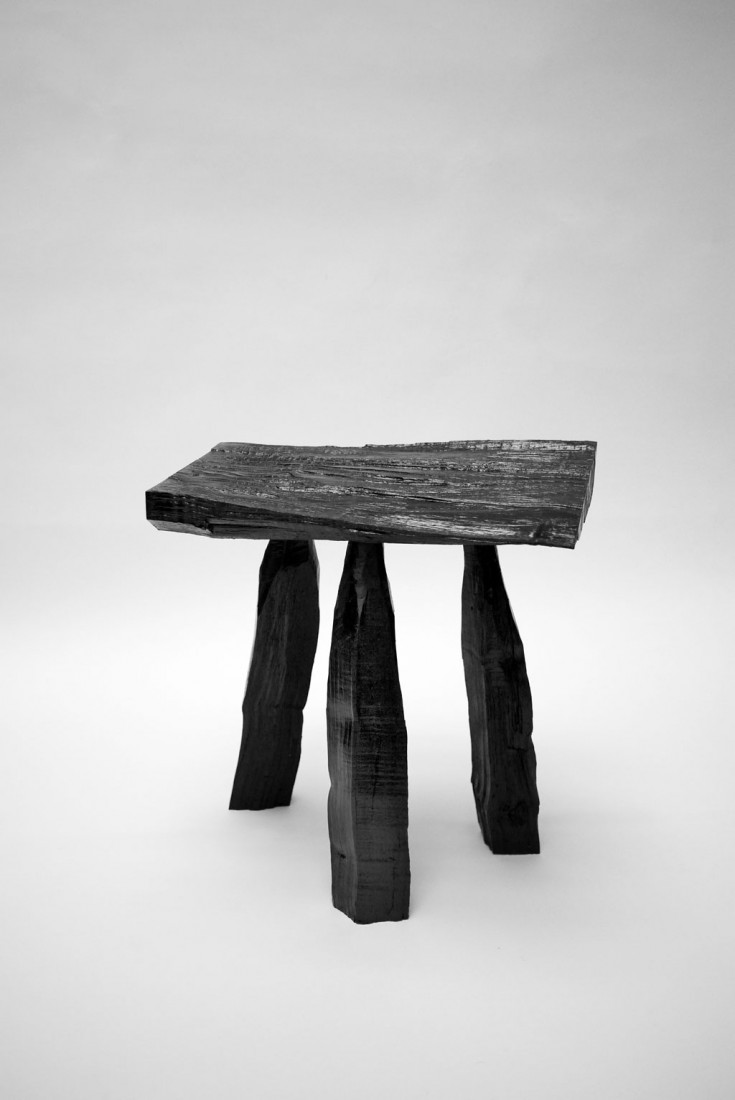
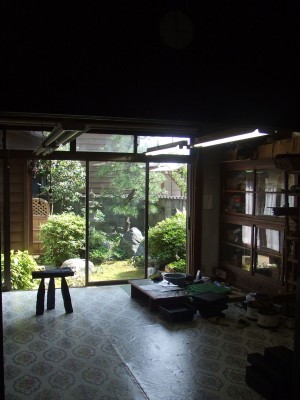
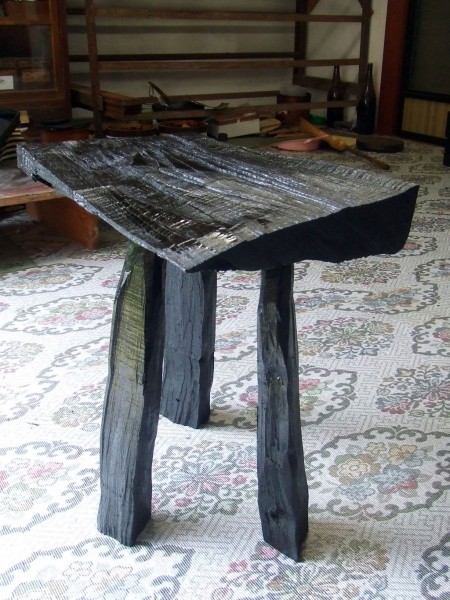
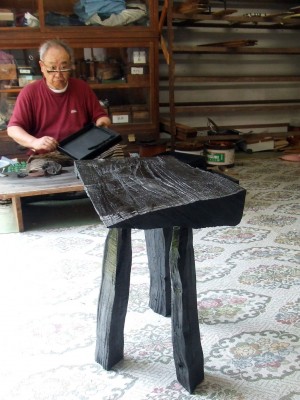
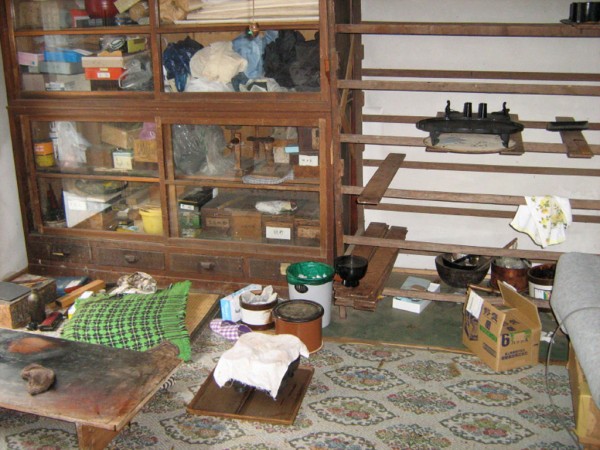
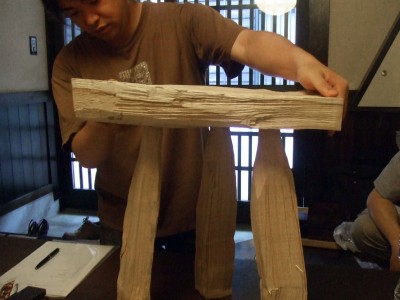
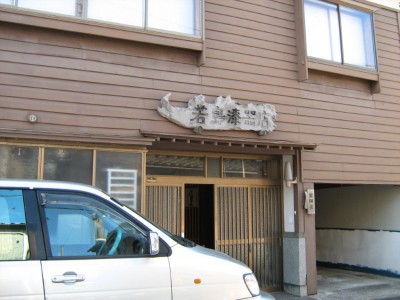

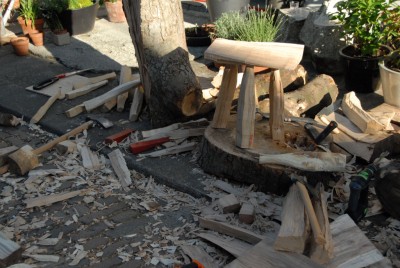
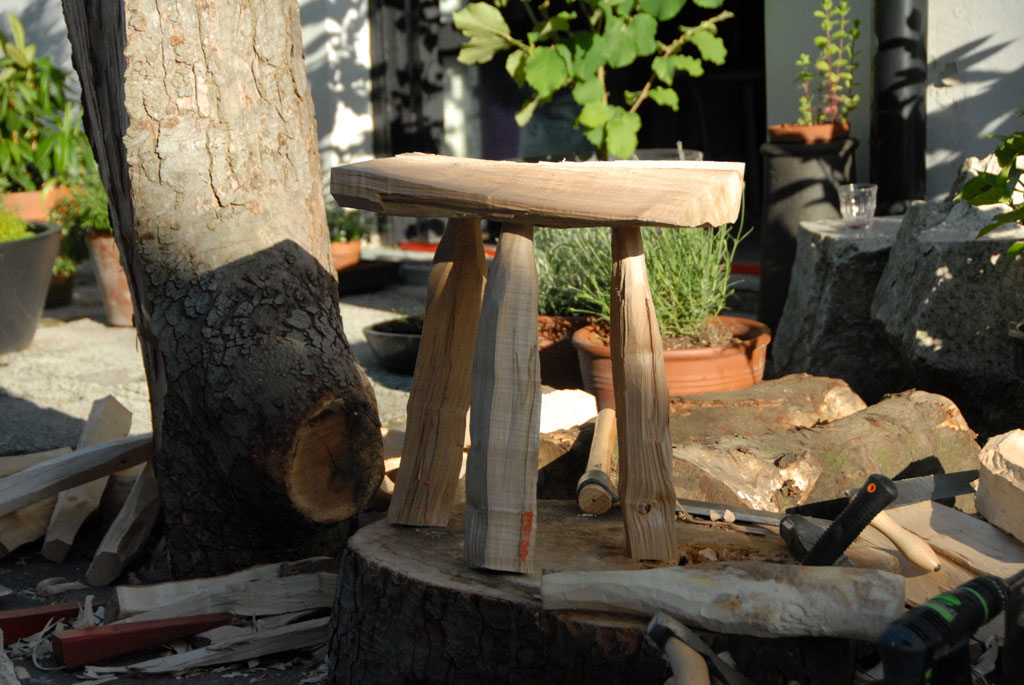
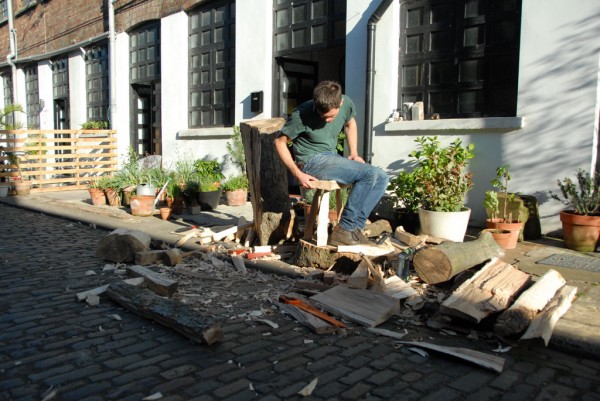
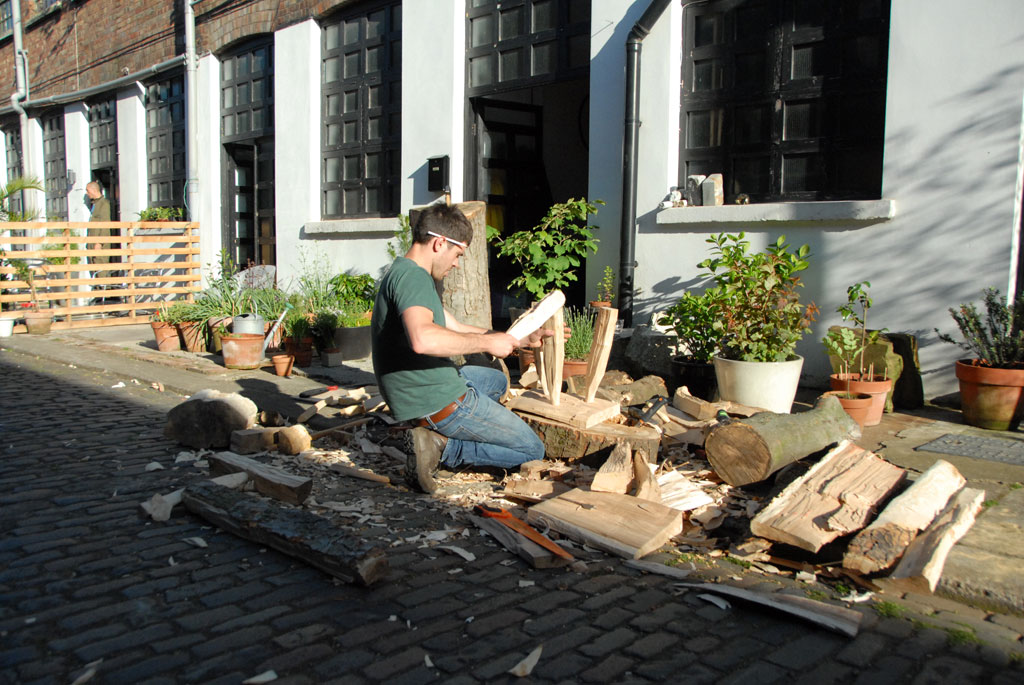
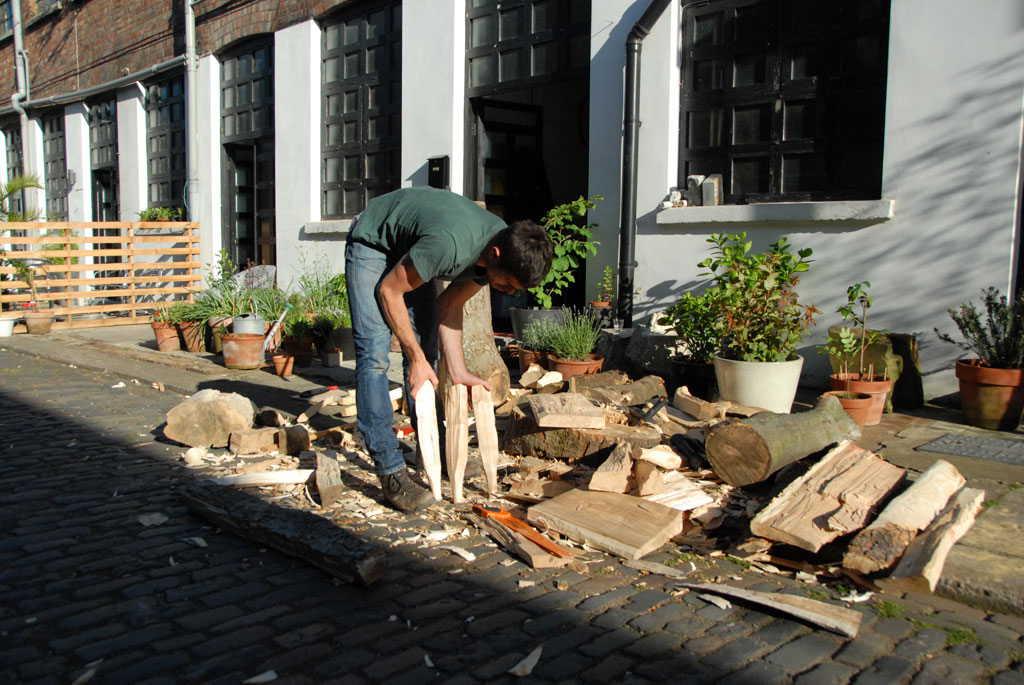
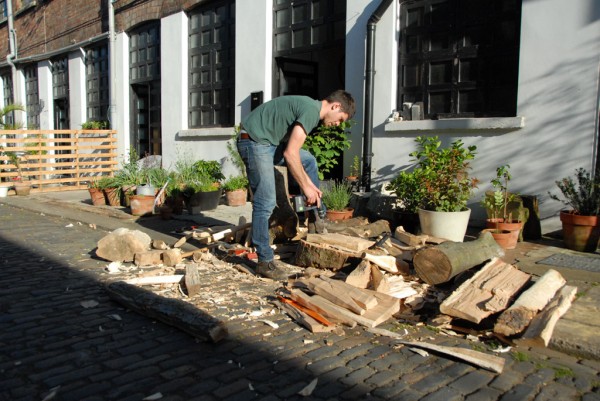
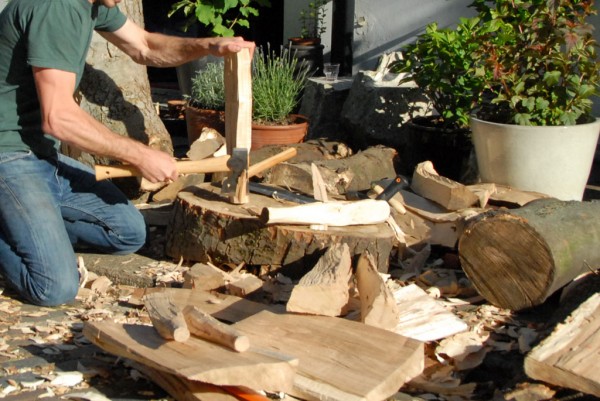
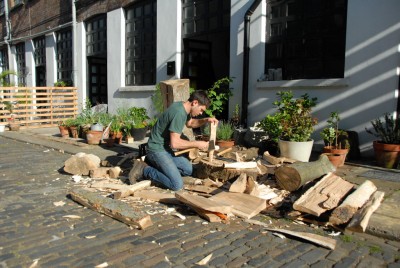
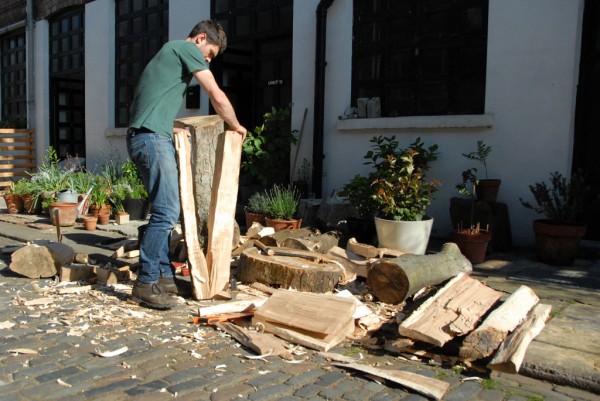
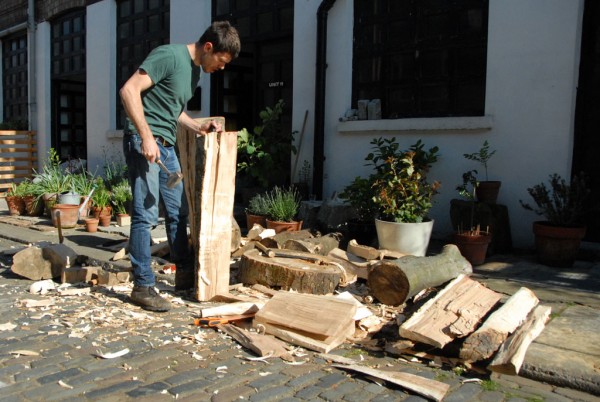
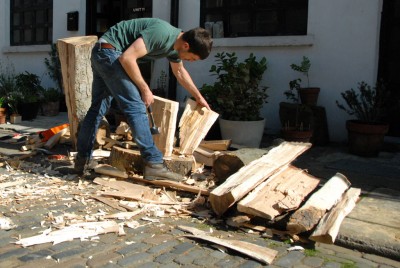
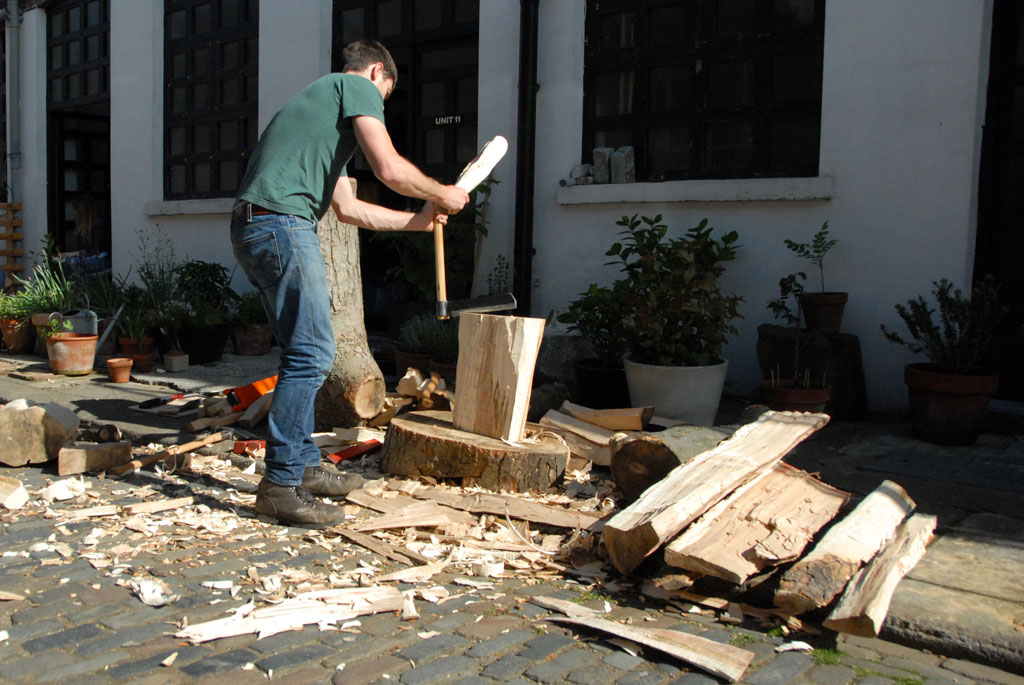
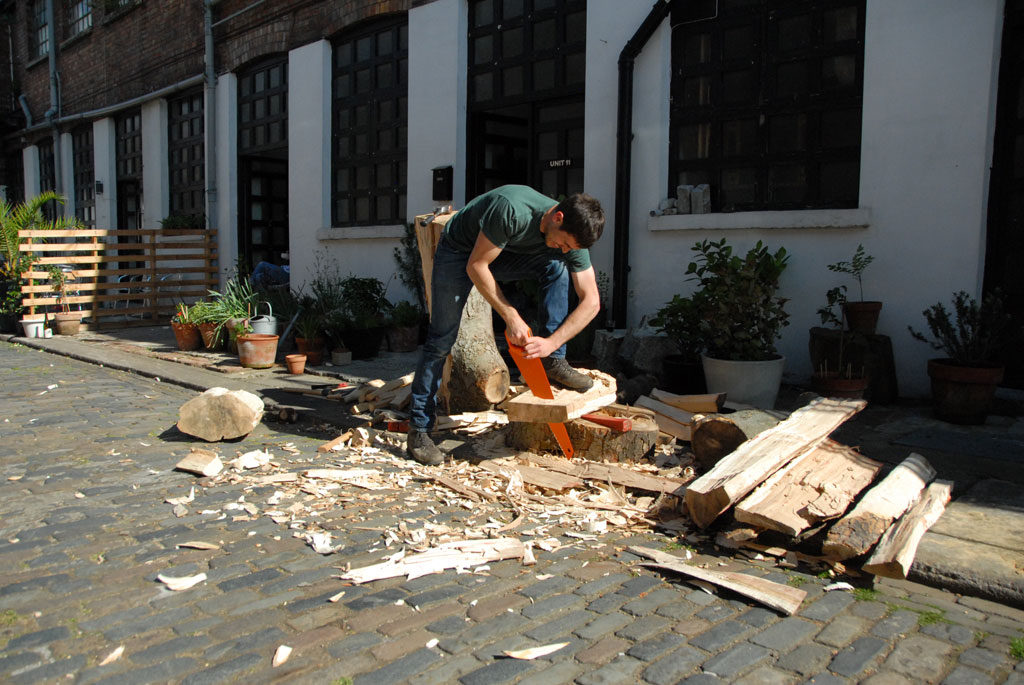
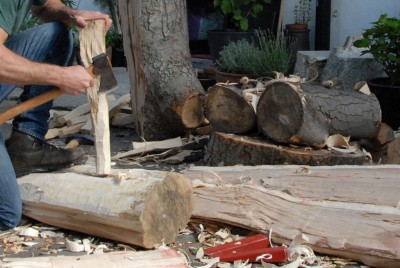
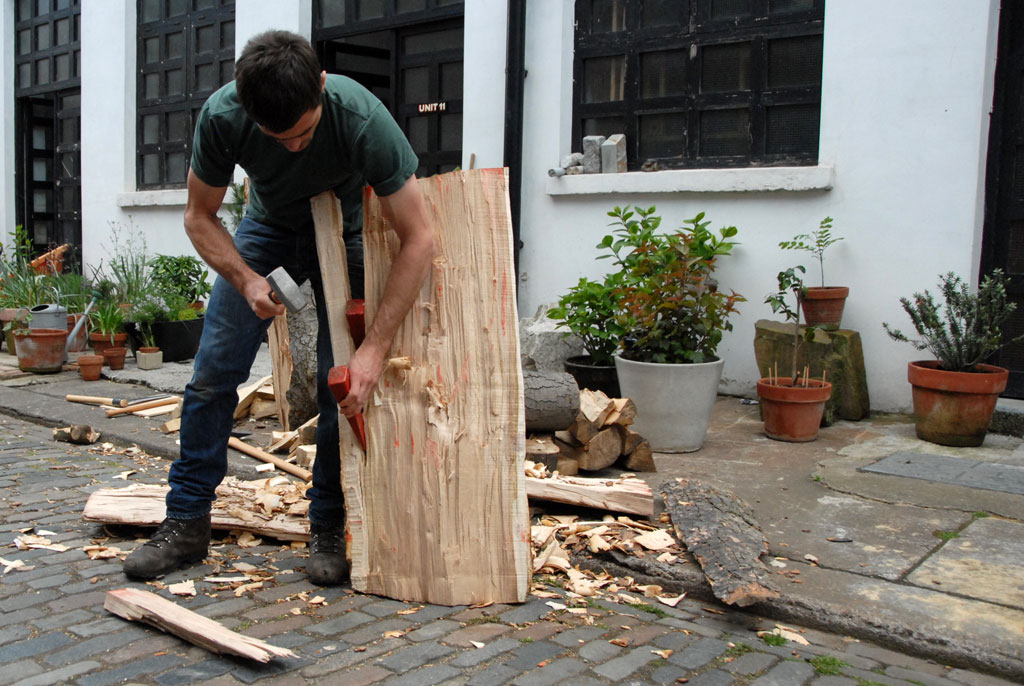
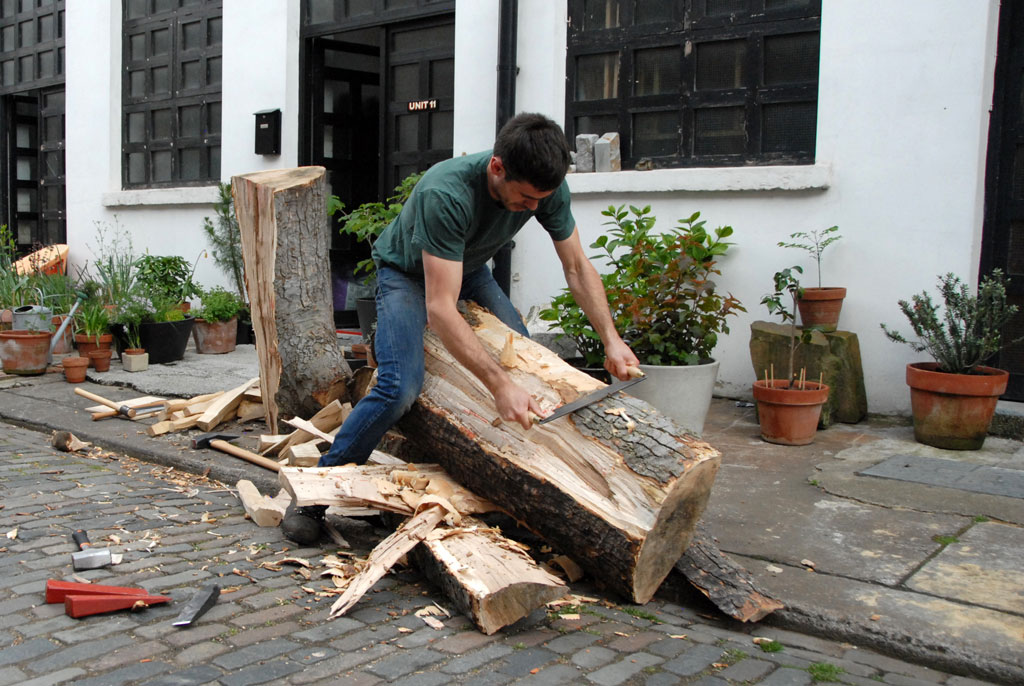
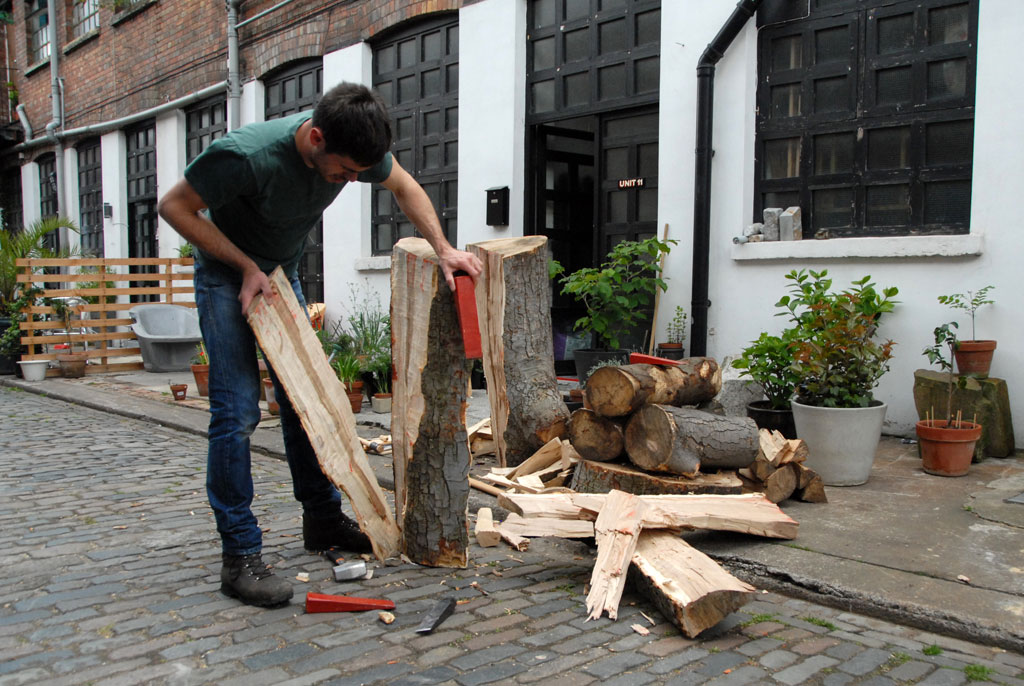
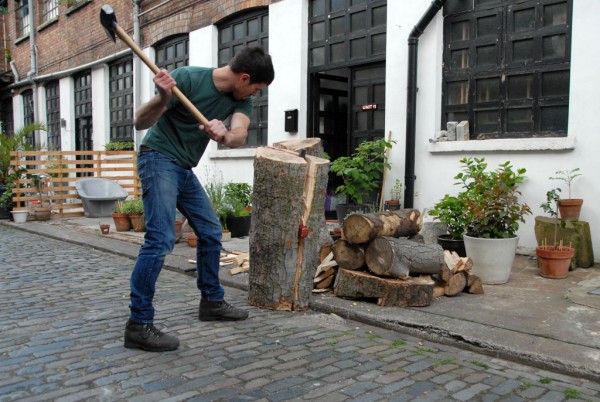
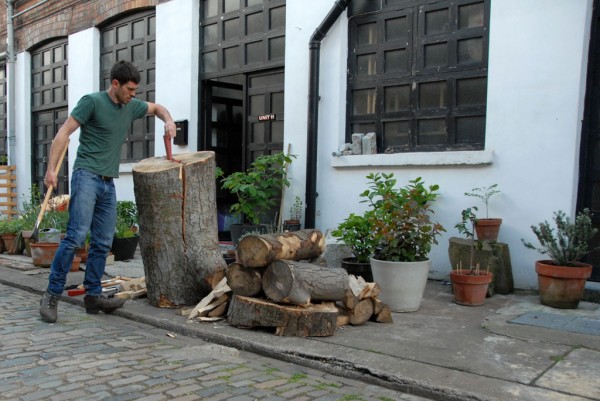
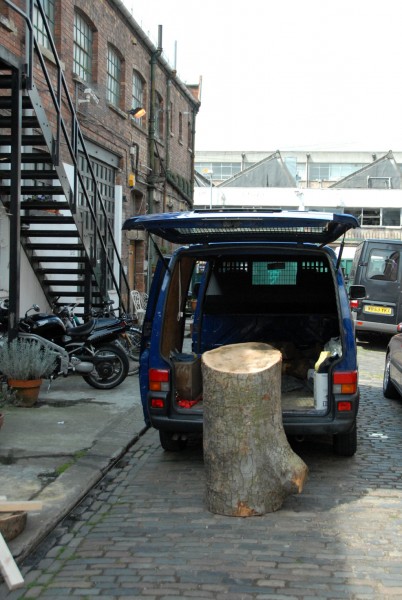
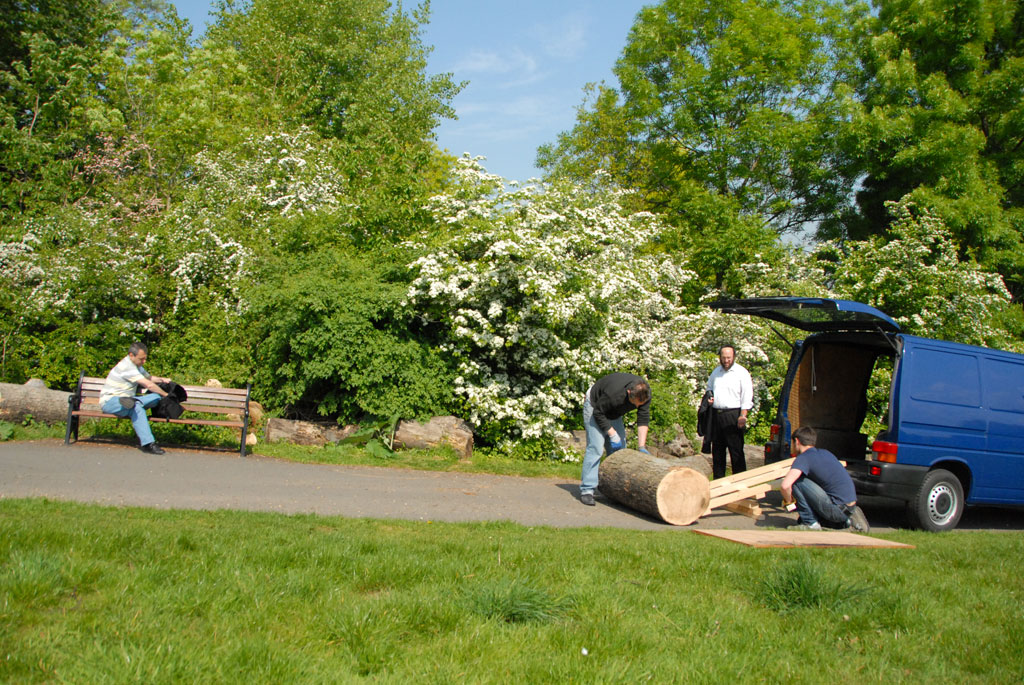
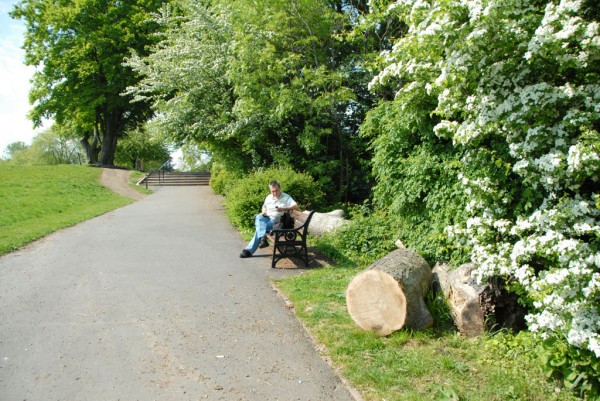 092 – Urushi Lacquer Stool
092 – Urushi Lacquer Stool
Urushi Lacquer Stool
2010
Chestnut from Springfield Park, London and urushi lacquer from Wajima, Japan.
A collaboration between Max Lamb & Hidetaka Wakashima, commissioned by Collacqueration
Urushi lacquer is derived from the sap of the urushi tree or Rhus verniciflua, a variety of poison sumac. This tree mainly grows in East Asia including Japan, China and the Korean Peninsula. Its main ingredient is the poisonous substance urushiol, which can cause a severe allergic reaction. However, once it dries, urushi lacquer is very hard, extremely durable, insoluble and resistant to alkali, acid, salinity and alcohol, making it perfect for functional tableware. Urushi lacquer ware is often highly revered due to the time and skill require to make even a simple bowl.
Wood is the traditional base material for lacquer-ware, its porosity allowing the liquid lacquer to penetrate into the grain structure and form a very durable homogenous bond. But typically the wood is processed to such an extent that the material becomes unidentifiable once lacquered and the naturally irregular grain pattern inherent to wood is lost, perhaps wasted even. My Urushi Lacquer Stool attempts to celebrate these qualities by adopting primitive green-woodworking techniques to transform a tree into stool. By splitting (or cleaving as it is known) a log by axe and froe, the wood splits along the grain and the natural structure of the wood, testament to its life as a tree, is maintained. Cleft wood allows the grain of the wood be both felt and seen, thus once the opaque lacquer is applied the nature of the tree continues to exist.
The film shows the making of a wood stool with a chestnut tree from Springfield Park, London, UK before it was sent to Wajima in Ishikawa, Japan to be lacquered by Hidetaka Wakashima.